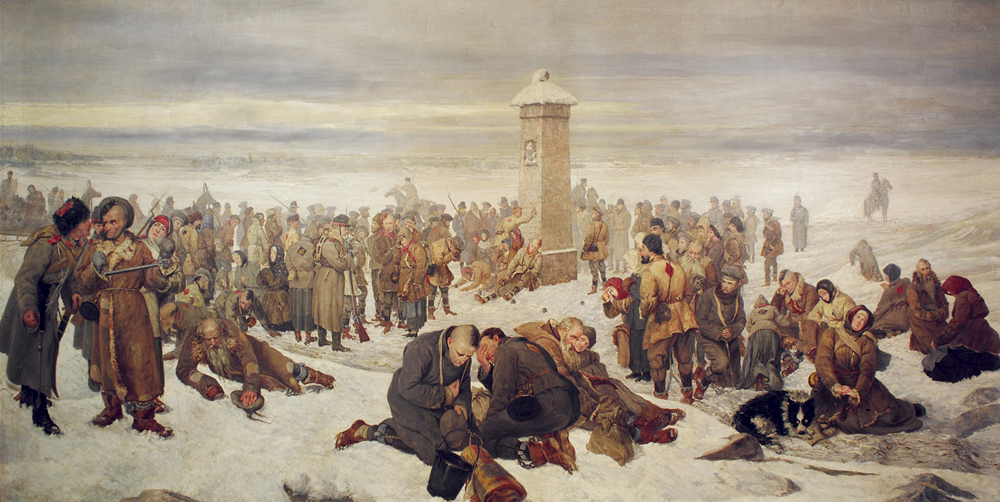Aleksander Sochaczewski (1843-1923) is today a forgotten painter. The value of his paintings is determined primarily by the subject matter he undertook. At least 118 of his works have survived to this day, most of which depict the fate of Poles exiled to Siberia and sentenced to imprisonment. The artist derived from his own tragic experiences.
Sochaczewski was born as Sonder Leib to a poor Jewish family living in Iłów near Sochaczew. In the late 1850s, he began his studies at the Warsaw Rabbinical School. In Warsaw, he became involved in secret patriotic activity, which preceded the outbreak of the January Uprising (1863).
In 1860, leaving his previous school, he began his studies at the Warsaw School of Fine Arts. He had shown talent and interest in painting and drawing since childhood, but his family did not consider the possibility of educating him in this direction. It was probably also at this time that he changed his name (he exhibited his student works prepared for the 1861 exposition as Aleksander Sochaczewski).
The Russian police found the trail of his patriotic activities by interrogating provincial students who had received leaflets with patriotic content from him. During the search at Sochaczewski’s home, weapons, moulds for casting bullets, parcels of patriotic press prepared for dispatch, illegal writings and matrices for forging stamps were found. For possession of these items, Russian law provided for the death penalty. His sentence was changed at the last minute to 22 years’ imprisonment in the mines of Eastern Siberia.
Sochaczewski returned from exile in 1884. As he was not allowed to settle in Warsaw, he went to Lwów (today’s Lviv), and then to Munich and Brussels. Based on sketches created in Siberia, he created a series of paintings that gained considerable popularity. He presented them at various European salons. The most famous of the paintings is ‘Farewell to Europe’, depicting deportees on their way to exile, gathered at a rest stop by an obelisk symbolising the border between Europe and Asia.
In 1913, when the fiftieth anniversary of the January Uprising was approaching, Sochaczewski donated his entire collection of paintings to the Lwów city council in exchange for a life annuity. In 1924, the painter was awarded the Knight’s Cross of the Order of Polonia Restituta.





